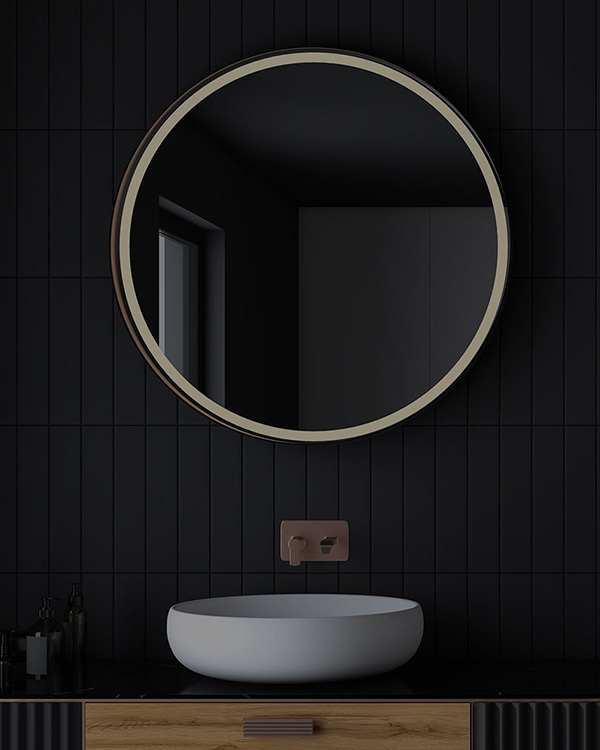Struggling with a vanity mirror that’s too high or too low? Incorrect placement can ruin functionality and aesthetics. Properly positioning your mirror ensures optimal usability and enhances your bathroom's look.
The ideal height for a vanity mirror depends on eye level, sink placement, and ADA guidelines. Proper measurements ensure a functional and stylish setup that enhances usability and aesthetics in any bathroom.
Wondering how to determine the perfect vanity mirror height? Let’s break it down step by step.
Eye Level Bathroom Mirror Height
The ideal vanity mirror height should align with the average eye level of users. This ensures comfortable use for daily grooming routines like shaving, applying makeup, and brushing teeth. Generally, the center of the mirror should be approximately 57–65 inches from the floor, accommodating most users. However, in households with varying heights, adjusting the mirror to suit the tallest and shortest users can enhance overall convenience. For shared spaces, a larger mirror or adjustable mounting can improve accessibility for all.
Measuring Your Bathroom Mirror Height: Above or Behind the Sink Faucet
When placing a vanity mirror, it’s crucial to measure the height in relation to the sink and faucet. Ideally, the mirror should be positioned 5–10 inches above the sink faucet to prevent water splashes and ensure a clean, polished look. If the mirror extends too low, it may be difficult to clean and could become damaged over time. Additionally, placing the mirror too high might make it difficult for shorter users to see themselves properly. Striking the right balance between functionality and aesthetics is key to a well-positioned vanity mirror.
Recommended Bathroom Mirror Height Above the Floor
A standard guideline for mounting a vanity mirror is ensuring its bottom edge is approximately 40 inches above the floor. This height complements most bathroom vanities and allows for a comfortable viewing experience. However, adjustments may be needed based on the height of your vanity and personal preferences. For double vanities, aligning mirrors symmetrically with equal spacing above each sink ensures a balanced and cohesive design. Proper installation height enhances the overall appeal of the bathroom while maintaining practical usability.
ADA-Compliant Bathroom Mirror Height
For bathrooms that need to comply with the Americans with Disabilities Act (ADA), specific height requirements must be met. According to ADA guidelines, the reflective surface of a vanity mirror should not be placed higher than 40 inches from the floor. This ensures accessibility for individuals who use wheelchairs or have mobility challenges. Additionally, tilting mirrors can be installed to accommodate different users. Following ADA standards not only enhances inclusivity but also creates a functional and user-friendly bathroom environment.
Height of Bathroom Makeup Mirrors
Makeup mirrors require precise placement to provide optimal lighting and comfort. Wall-mounted vanity mirrors used for makeup application should be positioned at a height that allows users to see their entire face without straining. A magnifying mirror, often placed alongside a standard vanity mirror, should be installed at eye level or slightly below. Adjustable and extendable mirrors are excellent options, as they allow users to customize positioning based on their needs. Ensuring the correct height enhances makeup precision and ease of use.
Conclusion
Proper vanity mirror height enhances functionality and aesthetics. By considering eye level, sink placement, and ADA guidelines, you can create a perfectly positioned mirror for your space.


